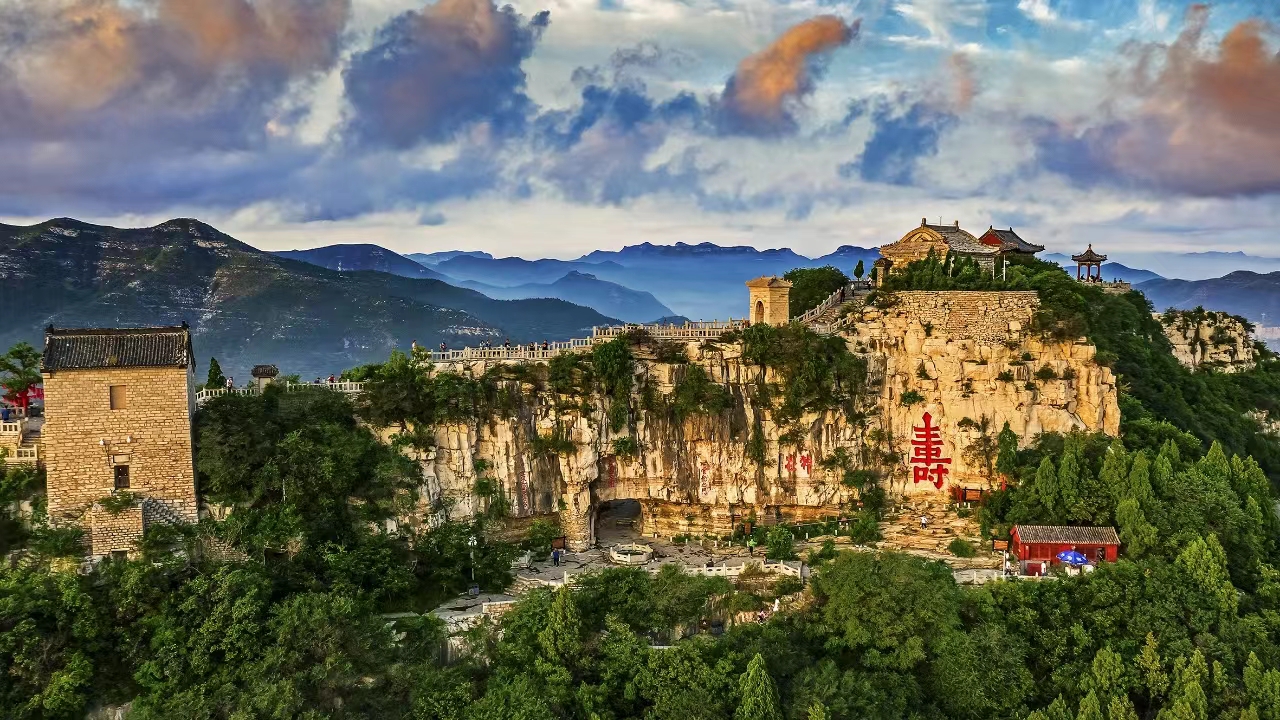Located in the southern part of the Qingzhou Ancient City and the northern end of the Tai-Yimeng mountains, the Yunmen Mountain has been a famous mountain in central Shandong Province since ancient times, with steep mountain terrain and numerous historical sites. It is now a National Park of China, a National AAAAA Tourist Attraction, a national key cultural relic protection site and a national geological park. Its main peak has an elevation of 421 meters and a relative height of 218 meters. The scenic area covers a land area of 12 square kilometers, including 2.8 square kilometers of core area, where the forest coverage rate reaches 98.07%. The air test shows a daily average PM10 concentration of 0.048 mg/m³, indicating excellent air quality (the national standards of daily average PM10 concentration: excellent air quality ≤0.05 mg/m³ and good air quality ≤0.15 mg/m³). The concentration of negative oxygen ions in the ambient air quality test reports 7,500/cm³, about 5 times the standard concentration (the WHO standard: not less than 1,000-1,500/cm³in fresh air).
The main attractions include the ancient architectural complex of Taoist, grotto statues, cliff inscriptions, Yunmen Cave, Yun Cavern, especially the giant cliff inscription of Chinese character Shou (longevity) in the Ming Dynasty. According to the dictionary Cihai (A Collection of Words), the mountain is the origin of the traditional blessing of "living as long as the Southern Mountain", and thus famed as the "No.1 Mountain of Longevity". The Yunmen Cave lies on the main peak Dayun, which changes with the seasons and presents a spectacular view of "jade Bi embedded in cliff". "Jade Bi on Yunmen" ranked first among Qingzhou's eight scenes in the past. The Yunmen Mountain has a long history of both Buddhist and Taoist cultures, known as "Buddhist in the south and Taoist in the north". On the southern side, there are more than 300 stone Buddha statues excavated during the Sui and Tang dynasties, while a number of well-known Taoist temples cluster on the northern side, including the Overlooking Longevity Pavilion, Master Chen Tuan's Cave, and the Fairy & Maiden Hall. Cliff inscriptions and stone tablets with poems and writings of historical celebrities spread over the mountain, with diverse fonts like official script, seal script, regular script, semi-cursive script and cursive script. Hence the mountain is known as a "treasure house of ancient calligraphy art".



